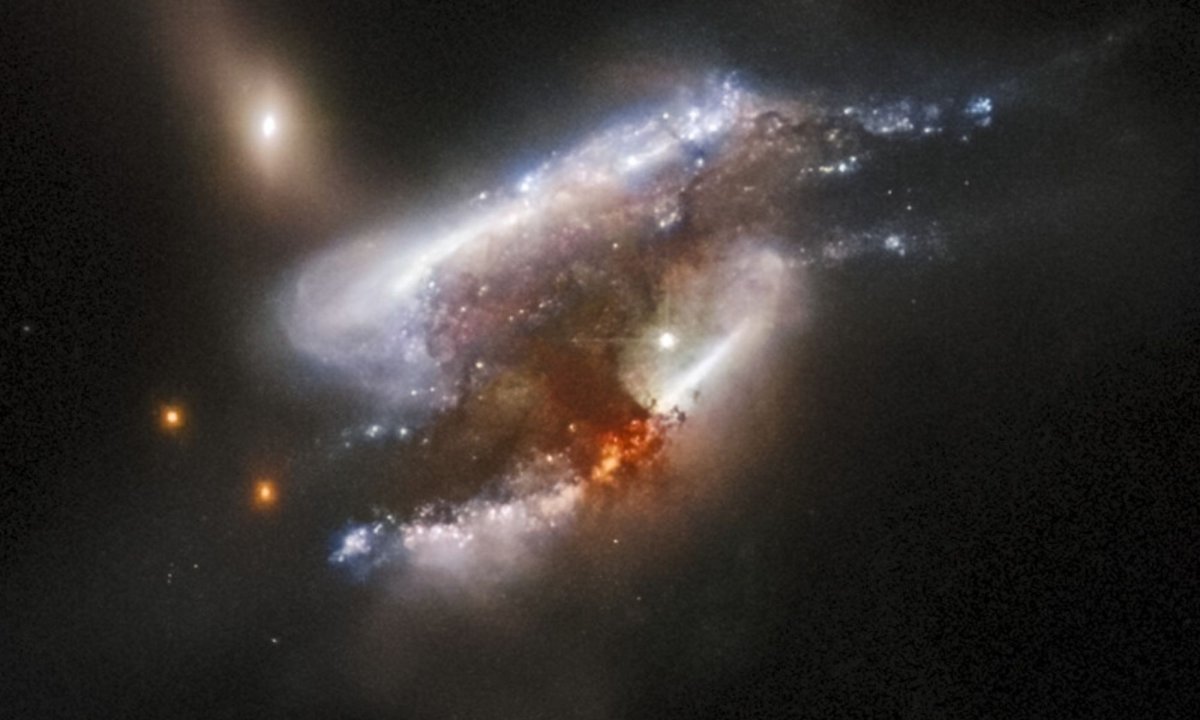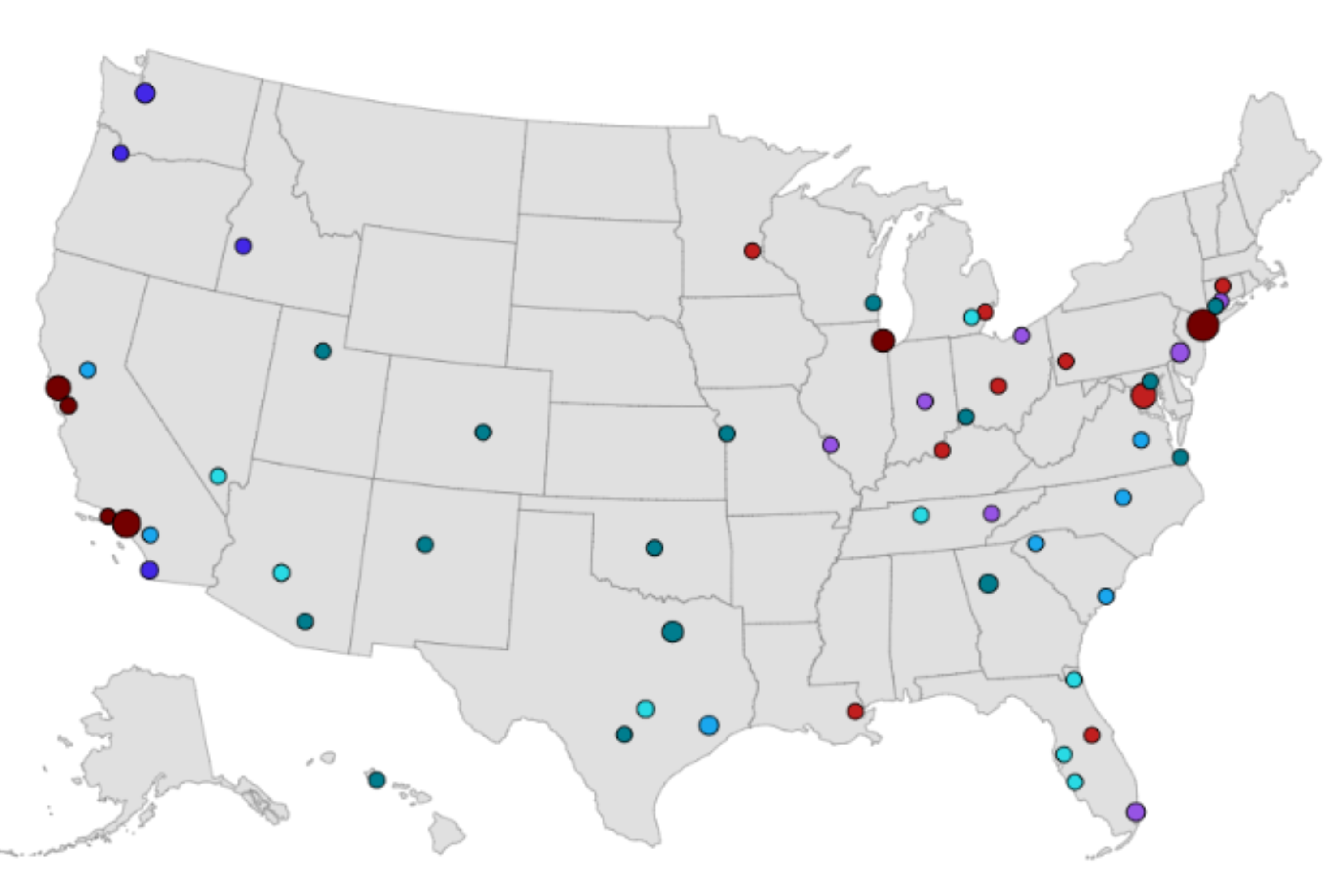The Hubble Space Telescope has imaged the ongoing collision of three distant galaxies. The picture shows bright swirls of dust and stars from the galaxies that make up the merger event IC 2431.
Located nearly 682 million light-years from Earth in the constellation of Cancer, the merger IC 2431 was first discovered by Stephane Javelle on February 24, 1896. And now, almost 126 years to the day since it was discovered, NASA revealed an image showing it in stunning detail.
NASA said: "The NASA/ESA Hubble Space Telescope has captured what appears to be a triple galaxy merger in progress, as well as a tumultuous mixture of star formation and tidal distortions caused by the gravitational interactions of this galactic trio.
"A thick cloud of dust obscures the center of this image – though the light from a background galaxy is piercing its outer extremities."
Studying ongoing mergers like that of the three galaxies that comprise IC 2431 could help scientists better understand such collisions and how some galaxies cannibalize others to grow to tremendous sizes.
According to Harvard's Center for Astrophysics, astronomers currently estimate that around a quarter of all galaxies are involved in a merger event with even more exchanging stars and gas with neighbors.
In addition to this, it could also reveal the ultimate fate of our own galaxy, the Milky Way, when in around 4 billion years it undergoes a head-on collision with its nearest galactic neighbor, Andromeda.
What Will Happen When Our Galaxy Collides With Another?
Simulations created by NASA and the European Space Agency show that the future collision between our galaxy and its neighbor, currently 2.5 million light-years away but fast approaching, will also involve a third party.
Andromeda's small companion galaxy, Triangulum, will be dragged into the collision with experts saying it could then go on to merge with the amalgamation galaxy created by the Milky Way/Andromeda collision.
There is also a small chance, that Triangulum, also known as M33, could actually collide with the Milky Way first.
During galactic mergers, though the galaxies as a whole collide, their individual stars are far enough apart that they are spared from colliding with one another. But the collision and the merger do affect their orbit around their galaxy's center.
Not only does a galactic merger result in the larger of two galaxies "stealing" stars from the other, but the mixing of the gas content of the two galaxies is also believed to trigger a "frenzy" of new star formation.
'Weird and Wonderful' Galaxies
This image of the triple galaxy merger IC 2431 was one of a series of Hubble observations of "weird and wonderful galaxies" made possible by the Galaxy Zoo citizen science project. it made use of Hubble's powerful Advanced Camera for Surveys, which let astronomers take a closer look at some previously identified unusual galaxies.
NASA explained: "The original Galaxy Zoo project was the largest galaxy census ever carried out and relied on crowdsourcing time from more than 100,000 volunteers to classify 900,000 unexamined galaxies.
"The project achieved what would have been years of work for a professional astronomer in only 175 days and has led to a steady stream of similar astronomical citizen science projects."
Subsequent Galaxy Zoo projects have included the largest ever studies of galaxy mergers and dwarf galaxies that are being stripped of stars and gas by the tidal forces of a larger galactic neighbor. T
NASA adds that these projects have also led to the discovery of previously unknown compact star-forming galaxies.

Uncommon Knowledge
Newsweek is committed to challenging conventional wisdom and finding connections in the search for common ground.
Newsweek is committed to challenging conventional wisdom and finding connections in the search for common ground.
About the writer
To read how Newsweek uses AI as a newsroom tool, Click here.








